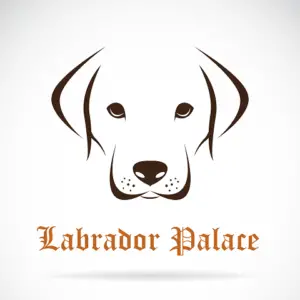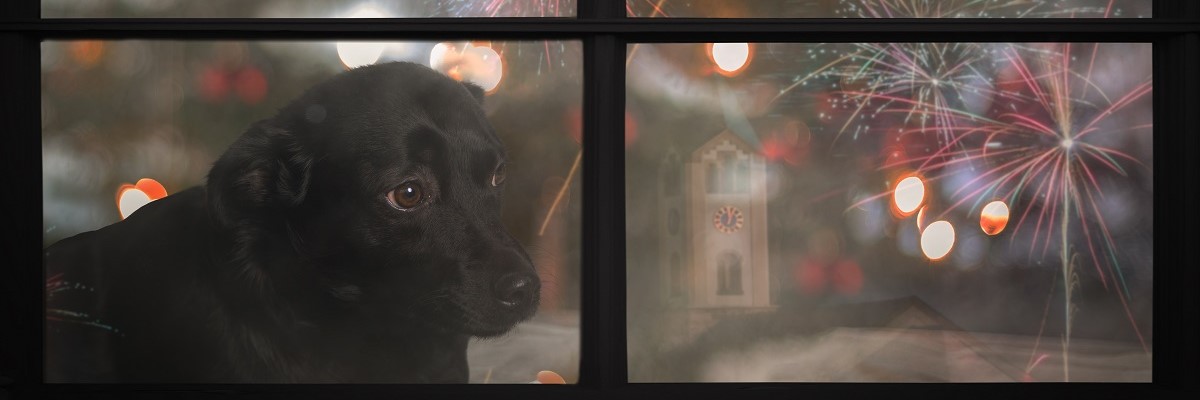Is Your Labrador Afraid Of Loud Noises? What might sound benign to you may sound like a world-shaking event to you, little Lab: the sudden boom of lightning and thunder, crackles, and pops of fireworks. There are several things you can do to ease your Labrador’s fear during storms or on the Fourth of July if it cowers in fear.
The part of a rainstorm that triggers anxiety and fear in dogs is unknown. It can be both the sound and the light bursts as with fireworks. Some dogs are more sensitive to sounds. Others might find it challenging to adjust to the new routine.
Dogs may experience changes in atmospheric pressure, and low-frequency thunderstorms may be detected well before we do. Anxiety may be caused by these things even before the storm occurs. Maybe even your behaviour around the loud noise will contribute to it. Your Labs will be able to detect your anxiety as well.
According to a study published in the Journal of Veterinary Behavior, dogs may be anxious. Studying anxious dogs revealed why they’re nearly twice as likely to show excessive noise sensitivity and anxiety when loud noises are heard. Furthermore, the dog might also be scared of fireworks, gunfire, and other loud noises daily if frightened of thunder.
Most Common Reasons Your Labrador is Scared or Afraid.
Labrador Scared Of Thunder
A well-behaved dog will start pacing, panting, sticking to its owners, or hiding in the bathroom before wriggling under the bed or into a tight space as soon as it sees lightning. In extreme cases, they may chew rugs, bite through drywall, or breakthrough doors out of fear.
| Reducing thunderstorm anxiety |
|---|
| It is most important to note that dogs often perceive constant patting or comforting as a reward for the fearful response or confirmation of the rightness of the nervous reaction. In contrast, a frightened dog will become even more anxious when disciplined. Keeping your Labrador calm is one of the most important things you can do. Project a calm and relaxed attitude. Playing with their favorite toys is an activity they usually enjoy so try to engage them in such activities. |
| Change Locations |
|---|
| Changing your dog’s location may be remarkably effective for reducing the noise of a storm or lessening its awareness of it. Some dogs like to chill in the bathroom or under a fan when there is a storm. As the fan produces “white noise,” the noises that bother them are muffled. You should not let your Labrador run around in a basement or in a place without windows. Many dogs favor the closet and space under the bed for their security. Take the example of your pet going to his crate. Consider covering it with a sheet to improve your sense of safety. However, keep the door of the crate open for your Labrador so that he doesn’t feel trapped. |
| Use Conditioning |
|---|
| Create a positive connection between something negative, such as a storm, and something positive. When they start feeling anxious about an incoming storm, bring out a toy and play with it. During these times, provide them with special treats. By enjoying their treat or toy throughout the storm, they are distracted and gradually reconditioned their response. |
| Desensitization |
|---|
| It is necessary to desensitize gradually. Recorded thunderstorms would typically be played at low volume for short periods of time. Basically, you’re trying to get your Lab used to hearing thunder and to see this as an ordinary sound. To mimic real thunder, the thunder must occur sporadically. Comparatively, this is done to monitor the behaviour of your labs. Try distracting them with fetch or some other fun activity while the noise is happening. Your Labrador might be scared off by the thundering noise; you may have to turn it down and try again tomorrow. This process can be long and requires a lot of dedication, but at the end of the day, your Labrador will be much more confident during a storm. |
Labrador Scared of Fireworks
Fireworks can be frightening to dogs when they have not been desensitized, as with thunderstorms. Nevertheless, some dogs are not accustomed to such events, making the 4th of July an especially traumatic holiday for you and your Lab.
Many pets run away on the fourth of July than any other day, so you must take extra precautions to ensure the well-being of your dog. Make sure your Labrador has valid identification in case he escapes during the commotion.
Unlike thunder or other natural loud sounds, your Labs perceive fireworks differently. In addition to the loud bangs and the burning smell of gunpowder, fireworks are lower to the ground, more vivid, and lower to the ground. They can be very stressed on the Fourth of July holiday. You can help ease their stress by doing the following things.
Before and On the Holiday
Consider locating your Lab in a quiet area so they won’t be bothered by the loud fireworks display. You can either take your Labrador to a friend’s or a family member’s residence or to a dog daycare that your dog is familiar with.
In case it is a new environment for your Lab, you may want to take him there a couple of times before the holiday, so it won’t be a surprise when you take him there on the fourth. If you can’t take your Lab to a safe place from the fireworks, you can put him in a kennel at home to keep him safe. Make sure someone else keeps your Labrador company if you aren’t at home.
Desensitization
As mentioned above, this works the same as dealing with a Thunder Storm, keeping it simple to avoid repetition. It might take three or four months to gradually increase the volume of your Lab recorded fireworks noise before they eat, run around, and also before attention and play.

Anxiety Medications for Dogs
| Alprazolam | In addition to being used to treat dogs who become anxious during thunderstorms and fireworks, alprazolam can also be used to treat other forms of anxiety. |
| Amitriptyline | Dogs with separation anxiety or general anxiety may benefit from amitriptyline. |
| Buspirone | Buspirone is a part of the anxiolytics class of azaperone. For dogs suffering from situational anxiety, such as a thunderstorm, this medicine requires repeated use to be effective. |
| Clomipramine | Separation anxiety in dogs can be treated with clomipramine. |
| Sileo | Sileo supports dogs with noise sensitivity. |
| Diazepam | Dogs have many diazepam uses, but it’s most effective as an anti-anxiety, sedative, hunger stimulant, and seizure-control medication. Diazepam is used for anxiety and panic disorders such as severe noise aversion. |
| Reconcile | Many forms of anxiety and behavioral problems (such as obsessive chewing, circling, or self-mutilation) can be treated with Reconcile. |
| Lorazepam | Lorazepam should be administered to dogs in anticipation of an event that is known to cause anxiety, such as a thunderstorm. Additionally, the medication can be given at the first sign of nervousness in a dog. |
| Paroxetine | There are several anxiety-related symptoms that can be treated with paroxetine, including aggression, noise sensitivity, and self-mutilation in dogs. |
| Sertraline | Sertraline may be prescribed for anxiety-related issues such as separation anxiety, thunderstorms and fireworks, and fear-based aggression. |
Conclusion
Hopefully, with this information, you can help your Labrador overcome any anxiety they have towards loud noises.


